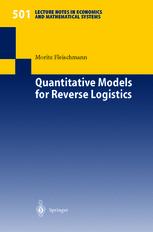

Most ebook files are in PDF format, so you can easily read them using various software such as Foxit Reader or directly on the Google Chrome browser.
Some ebook files are released by publishers in other formats such as .awz, .mobi, .epub, .fb2, etc. You may need to install specific software to read these formats on mobile/PC, such as Calibre.
Please read the tutorial at this link: https://ebookbell.com/faq
We offer FREE conversion to the popular formats you request; however, this may take some time. Therefore, right after payment, please email us, and we will try to provide the service as quickly as possible.
For some exceptional file formats or broken links (if any), please refrain from opening any disputes. Instead, email us first, and we will try to assist within a maximum of 6 hours.
EbookBell Team

5.0
90 reviewsEconomic, marketing, and legislative considerations are increasingly leading companies to take back and recover their products after use. From a logistics perspective, these initiatives give rise to new goods flows from the user back to the producer. The management of these goods flows opposite to the traditional supply chain flows is addressed in the recently emerged field of Reverse Logistics. This monograph considers quantitative models that support decision making in Reverse Logistics. To this end, several recent case studies are reviewed. Moreover, first hand insight from a study on used electronic equipment is reported on. On this basis, logistics issues arising in the management of "reverse" goods flows are identified. Moreover, differences between Reverse Logistics and more traditional logistics contexts are highlighted. Finally, attention is paid to capturing the characteristics of Reverse Logistics in appropriate quantitative models.